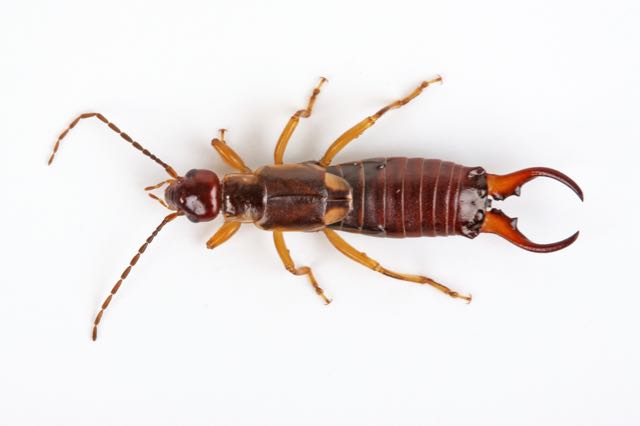European Earwig: Pest, Beneficial or Both?
go.ncsu.edu/readext?609049
en Español / em Português
El inglés es el idioma de control de esta página. En la medida en que haya algún conflicto entre la traducción al inglés y la traducción, el inglés prevalece.
Al hacer clic en el enlace de traducción se activa un servicio de traducción gratuito para convertir la página al español. Al igual que con cualquier traducción por Internet, la conversión no es sensible al contexto y puede que no traduzca el texto en su significado original. NC State Extension no garantiza la exactitud del texto traducido. Por favor, tenga en cuenta que algunas aplicaciones y/o servicios pueden no funcionar como se espera cuando se traducen.
Português
Inglês é o idioma de controle desta página. Na medida que haja algum conflito entre o texto original em Inglês e a tradução, o Inglês prevalece.
Ao clicar no link de tradução, um serviço gratuito de tradução será ativado para converter a página para o Português. Como em qualquer tradução pela internet, a conversão não é sensivel ao contexto e pode não ocorrer a tradução para o significado orginal. O serviço de Extensão da Carolina do Norte (NC State Extension) não garante a exatidão do texto traduzido. Por favor, observe que algumas funções ou serviços podem não funcionar como esperado após a tradução.
English
English is the controlling language of this page. To the extent there is any conflict between the English text and the translation, English controls.
Clicking on the translation link activates a free translation service to convert the page to Spanish. As with any Internet translation, the conversion is not context-sensitive and may not translate the text to its original meaning. NC State Extension does not guarantee the accuracy of the translated text. Please note that some applications and/or services may not function as expected when translated.
Collapse ▲Dr. Robert Orpet | 6/25/2019 | Via Entomology Today
The European earwig (Forficula auricularia) may be difficult to appreciate because it is an invasive species with menacing rear-pincers, and the name “earwig” is creepy. However, what role do they play in agricultural settings like orchards? Among orchardists interviewed in Central Washington, some believed earwigs to be apple-damaging pests, and others considered them to be aphid predators, but the majority were unsure of the role earwigs play in the orchard ecosystem.

To address this uncertainty, several experiments were designed and literature was reviewed to write a profile article published today in the open-access Journal of Integrated Pest Management about European earwig biology and management in fruit crops. The conclusion: The European earwig is an underappreciated biological control agent and likely a beneficial insect in most apple orchards.
Menacing Pest
European earwigs are commonly found on damaged apples, but the question arises: Did earwigs cause the damage, or are they merely sheltering in existing damage because of their preference to aggregate in tight spaces? This question was addressed by assessing fruit damage in control plots compared to plots where thousands of earwigs were released. Occasionally earwigs were recovered inside stem bowl splits of apples (see image below), but stem bowl splits are a horticultural issue common to many fruits (such as tomatoes) and are not caused by insect feeding. Earwigs may exploit this damage for food or shelter, but earwigs do not cause of stem bowl spits. Earwigs do occasionally damage apples when confined with them in the lab, but in field conditions, there was no correlation between fruit damage with earwig densities. In relatively soft fruit like peaches, earwigs are pests, but apples may be too hard for earwigs to easily attack.
Friendly Predator?
Unlike popular and celebrated predators like lady beetles, European earwigs are nocturnal, which makes it difficult for apple orchard managers to observe and appreciate their biological control services. To obtain direct evidence of predatory behavior, video footage was captured of earwigs consuming a woolly apple aphid (Eriosoma lanigerum) colony at night.
Earwigs are generalist predators, capable of eating a variety of insect pests, and experimental evidence shows European earwigs contribute to woolly apple aphid and green apple aphid (Aphis pomi) suppression. More research is needed to assess their importance in suppressing other pests across crop systems.
Continue reading Dr. Orpet’s article at Entomology Today.


